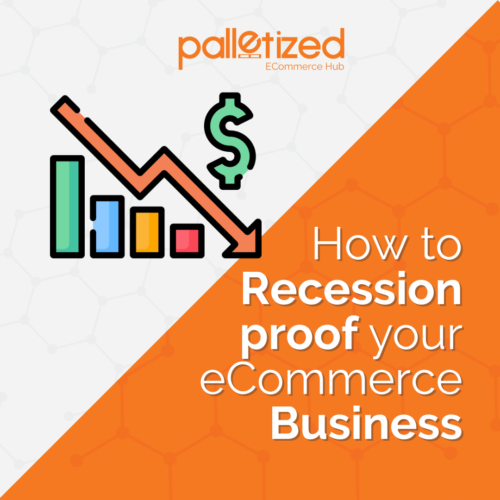With the economy continually shuffling between the highs and lows, small business owners and eCommerce stores are bearing the brunt more than ever. Although no one is sure whether the economy will reach a complete downturn, businesses need to prepare as though it is imminent. Smart companies are coming up with recession-proof practices, which you can replicate to solidify your eCommerce business and prevent it from being swept away.
It can seem like a scary, tough time, but we’re here with some highly recommended tips for recession-proofing your eCommerce business.
1. Focus on customer’s lifetime value (LTV)
Find the right customer segment (ideally 20% of your customers would drive 80% of revenue)
Figure out who your most valuable customers are using the RFM (Recency, Frequency, Monetary) model approach. Implement behavior-based upsell or high-value subscriptions targeted toward these customers.
Add a freebie to the customer’s shopping cart when they’re making a purchase
Surprisingly, free samples boost sales by as much as 2000%. Also called reciprocity, shoppers may feel obligated to give your brand something when they receive a free sample.
Use smart bundles to increase the average order value
Build a customer-friendly loyalty program
68% of millennials are not likely to buy from brands that don’t have a good loyalty program. This shows the importance of a customer friendly-loyalty program in increasing the average customer lifetime value in eCommerce.
2. Optimize pricing
Don’t price similar products exactly the same
For example, clothing retailers price shirts differently based on whether the shirt has a solid color or is patterned. This eCommerce pricing strategy prevents customers from deliberating whether they like the solid or pattern version better. If the patterned shirt costs more, the buyer would like the design more than the solid version, making it worth the additional expense.
Choose a price point that ends in 9 (for example $1.99)
Use the buy one get one (BOGO) deal to move less popular inventory at a faster rate
Highlight the price differences visually
When you run a sale, place the sale price next to the original price. Going a step further, use a different size and color to show the sale price.
3. Make shoppers’ lives easy (eliminate friction)
Introduce progress bars for mobile checkout
Right below the header, allow customers to backtrack, offer visual confirmation of progress, and maintain visual continuity.
Personalize checkout with pre-filled forms
Offer last-minute promo codes on the checkout page for better checkout completion rates
Introduce urgency on the checkout page to prompt them to buy the product now
Urgency helps overcome overthinking and drives quick action. In e-commerce, show your customers limited product availability or a lack of time to complete purchases faster.
4. De-risk purchases
75% of online shoppers want to know the return policy before they purchase a product. And 15% of shoppers abandon the cart when the return policy is unclear.
Offer a free sample with every order
Include free returns
Offer free returns, eliminate restocking fees and be upfront about shipping charges on the return.
5. Work on moving underperforming products
If you’ve got products sitting on the shelves that aren’t moving, clear them out. It’s okay if you only recoup the wholesale cost spent on the product. Cash in the bank is any day better than dust on the shelves.
6. Find new ways to attract customers
Downturns will lead to competitors operating in the same market targeting a similar segment of customers while consumer spending drops. In-store pickup is an underutilized way to attract new customers.
7. Assure customers (build more trust)
Chances are, customers buying from you for the first time may be worried about the product quality. Customer reviews are a form of social proof that makes people confident about their purchasing decisions.
8. Minimize Overhead Costs
Businesses with enormous overhead costs are prone to financial issues during an economic downturn, especially when the expenses don’t result in significant sales and business revenue.
9. Keep Sending Emails
Email marketing has always been the leading sales channel for eCommerce businesses. Even in a recession, keep sending those emails. Keeping in touch with your subscribers and engaging them is of utmost importance.
10. Invest in Automation Tools
In a recession, spending less, not more, should be the goal. Sometimes, it is not only finance you need to watch but also the time you spend on marketing, which could be spent on other important business tasks. Rather than make drastic cuts, take advantage of automation software and tools to take care of repetitive tasks in your eCommerce business.

